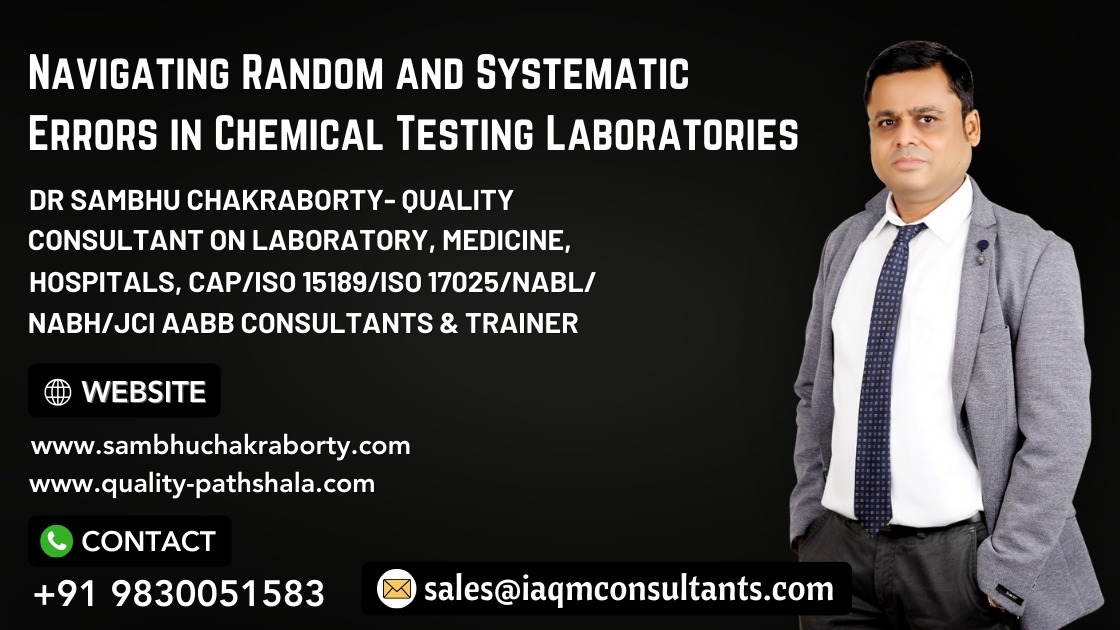In the precise world of chemical testing, errors can significantly impact the accuracy and reliability of results. Laboratories must understand the differences between random and systematic errors, identify their causes, analyze their sources, and take appropriate actions to mitigate them. This article will explore the intricacies of these errors and the strategies for managing them in a chemical testing laboratory.
Understanding Random and Systematic Errors
Random Errors: Random errors are unpredictable fluctuations that occur during measurement and affect the precision of results. They can vary in magnitude and direction and are caused by uncontrollable variables such as environmental conditions or instrumental noise.
Systematic Errors: Systematic errors, on the other hand, are reproducible inaccuracies that consistently occur in the same direction. They affect the accuracy of measurements and are often linked to flaws in the measurement system, such as instrument calibration, operator bias, or a flawed testing method.
Identification of Errors
For Random Errors: Identification typically involves the use of statistical methods. By repeating measurements under the same conditions and observing the variation in results, laboratories can gauge the presence of random errors. Statistical tools like standard deviation and control charts can help in quantifying this type of error.
For Systematic Errors: Systematic errors are identified through calibration checks against known standards. If results consistently deviate from the expected value, a systematic error is likely present. Comparing results against those obtained using different instruments or methods can also help identify systematic errors.
Cause Identification System
Determining the root cause of an error is crucial for effective correction. Laboratories implement cause identification systems such as:
- Root Cause Analysis (RCA)
- Fishbone Diagrams
- 5 Whys Analysis
These systems allow laboratories to trace the source of an error back to its origin, whether it be human error, equipment failure, or an external environmental factor.
Source of Error Analysis
Once an error is identified, it’s essential to analyze its source. For random errors, this might involve reviewing environmental control logs or equipment maintenance records. For systematic errors, it could include a thorough review of the calibration records, procedural adherence, and instrument performance history.
Action to Be Taken
To Address Random Errors:
- Increase the number of observations to average out the error.
- Improve environmental controls.
- Enhance the precision of instruments.
To Address Systematic Errors:
- Recalibrate or repair instruments.
- Review and revise testing methods.
- Train staff to eliminate operator bias and procedural deviations.
Conclusion
Random and systematic errors present distinct challenges within a chemical testing laboratory. By understanding their nature, employing methods to identify their causes, analyzing their sources, and implementing corrective actions, laboratories can significantly reduce these errors. This proactive approach ensures the generation of reliable data, maintaining the integrity and credibility of the laboratory’s work.
About the Author
Dr. Sambhu Chakraborty is a distinguished consultant in quality accreditation for laboratories and hospitals. With a leadership portfolio that includes directorial roles in two laboratory organizations and a consulting firm, as well as chairmanship in a prominent laboratory organization, Dr. Chakraborty is a respected voice in the field. For further engagement or inquiries, Dr. Chakraborty can be contacted through email at director@iaqmconsultants.com and info@sambhuchakraborty.com. Additional resourcesand contact information are available on his websites, https://www.quality-pathshala.com and https://www.sambhuchakraborty.com, or via WhatsApp at +919830051583

Great blog!
What’s instrument noise? How can we check it?
Thanks
NICE TO KNOW ABOUT ALL THE DETAILS
SIR
YOU ARE DOING QUALITY ASSURANCE ACTIVITIES IN THE FIELD OF MEDICAL AND CHEMICALS.
CAN i KNOW MORE ABOUT IT..
REGARDS